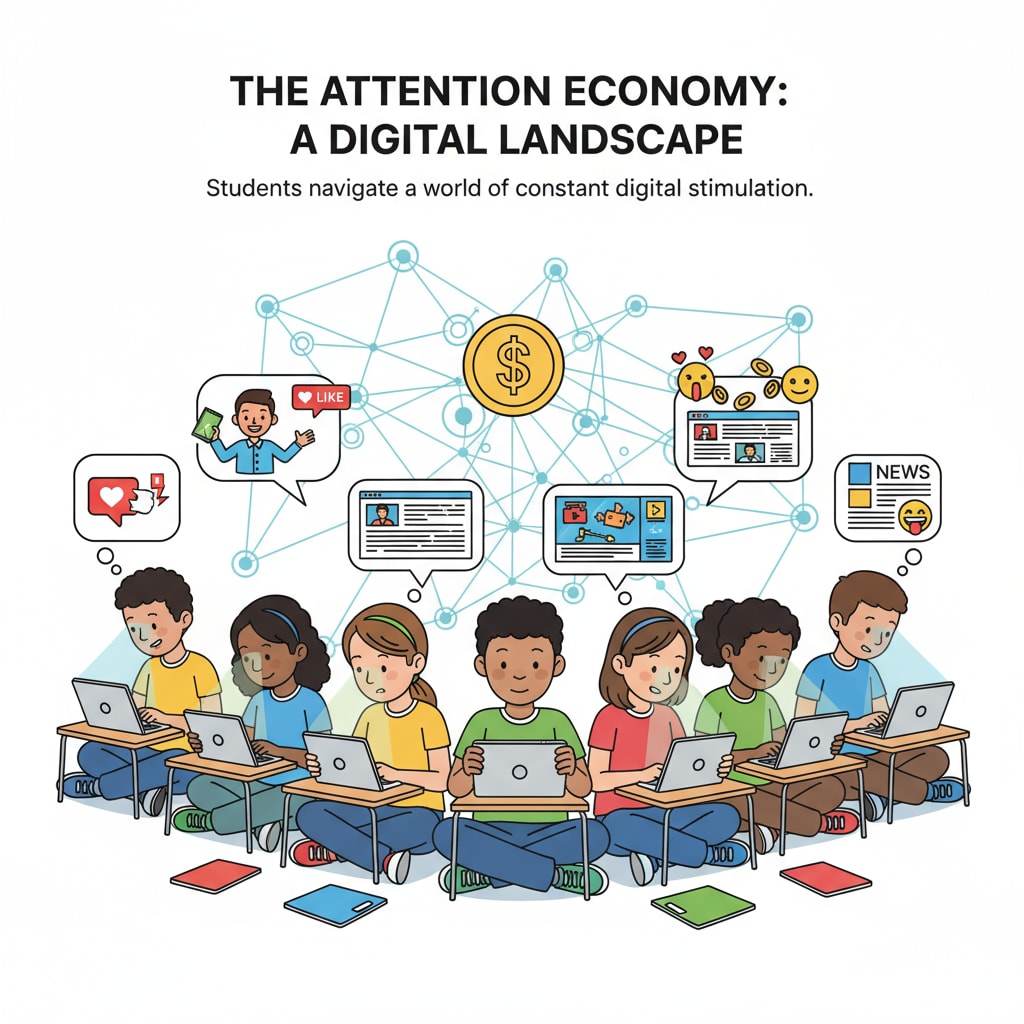The attention economy, information deserts, and the tech industry have become intertwined in a way that significantly impacts K12 students. In today’s digital age, tech companies have masterfully designed an attention economy that aims to capture and hold the attention of users, especially the young minds in K12 education. This pursuit of attention has led to the creation of information deserts, areas filled with low-quality content that is detrimental to students’ cognitive health and learning.

The Mechanics of the Attention Economy
The attention economy operates on the principle of turning user attention into a valuable commodity. Tech companies use sophisticated algorithms and design techniques to maximize the time users spend on their platforms. For example, social media platforms use algorithms that show users content likely to evoke strong emotions, such as excitement or outrage. These emotions trigger the release of dopamine in the brain, creating a cycle of seeking more of such content. As explained by Wikipedia’s page on the attention economy, this continuous pursuit of attention is driven by the economic incentives of advertising revenue. The more attention a platform can attract, the more it can charge for ads.
The Creation of Information Deserts
This focus on attention has led to the proliferation of low-quality content, forming information deserts. Digital platforms prioritize content that is highly shareable and engaging, often at the expense of accuracy and educational value. Memes, sensational news stories, and shallow entertainment content flood the screens of K12 students. As a result, students are exposed to a vast amount of information that lacks depth and substance. According to Britannica’s article on information overload, this overabundance of low-quality information can make it difficult for students to distinguish between valuable and worthless knowledge.

The impact on K12 students’ cognitive health is profound. Constant exposure to such content can lead to a decrease in their ability to concentrate, think critically, and engage in deep learning. Students may develop shorter attention spans, making it challenging for them to focus on complex academic tasks. Moreover, the lack of high-quality information can limit their knowledge acquisition and intellectual growth.
To address this issue, educators, parents, and policymakers need to work together. Educators can teach students digital literacy skills, helping them navigate the vast sea of information and identify reliable sources. Parents can monitor their children’s online activities and set limits on screen time. Policymakers can introduce regulations to ensure that digital platforms provide a healthier balance of content for K12 students. In conclusion, the attention economy, information deserts, and the tech industry’s influence on K12 students must be carefully addressed to create a more conducive digital learning environment.
Readability guidance: Short paragraphs and lists are used to summarize key points. Each H2 section has a list or clear explanation. The passive voice and long sentences are kept to a minimum. Transition words like ‘however’, ‘therefore’, ‘in addition’, ‘for example’, and ‘as a result’ are used throughout the text.


